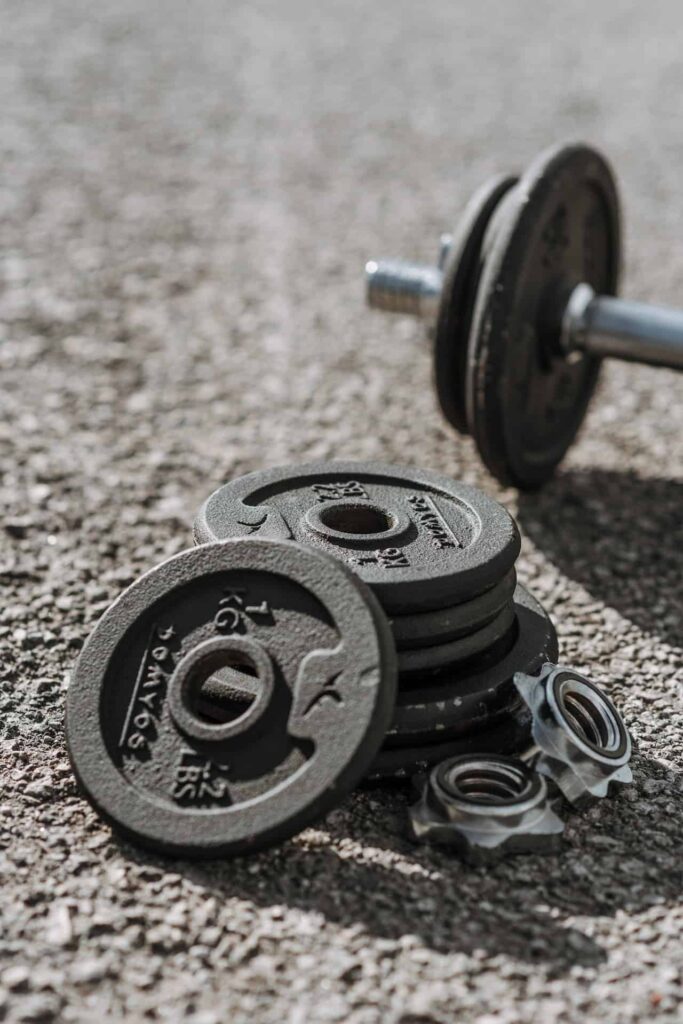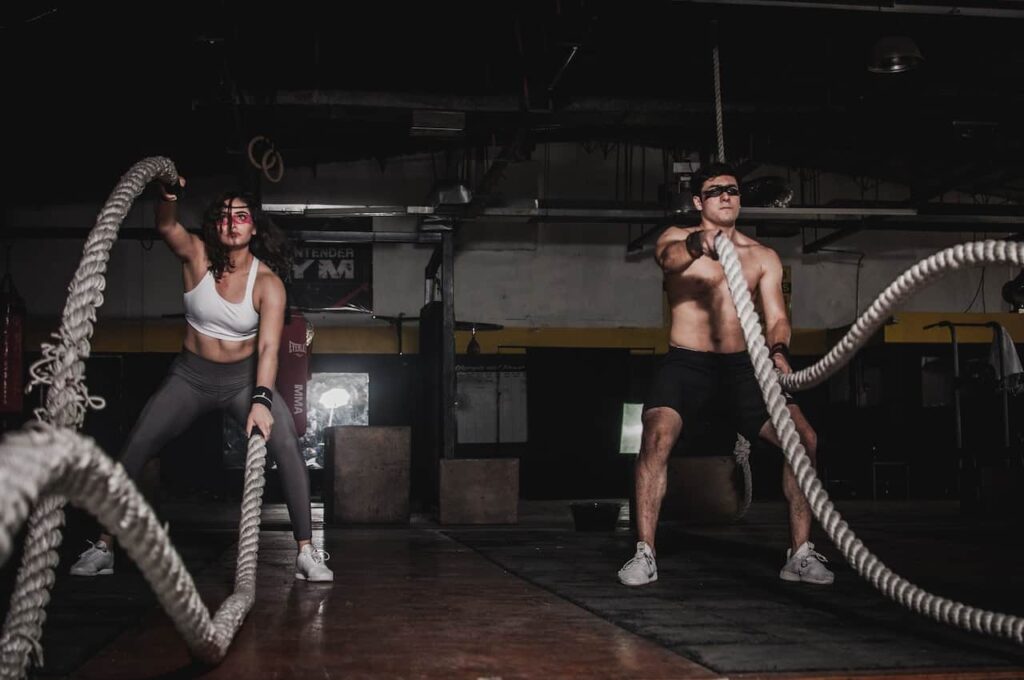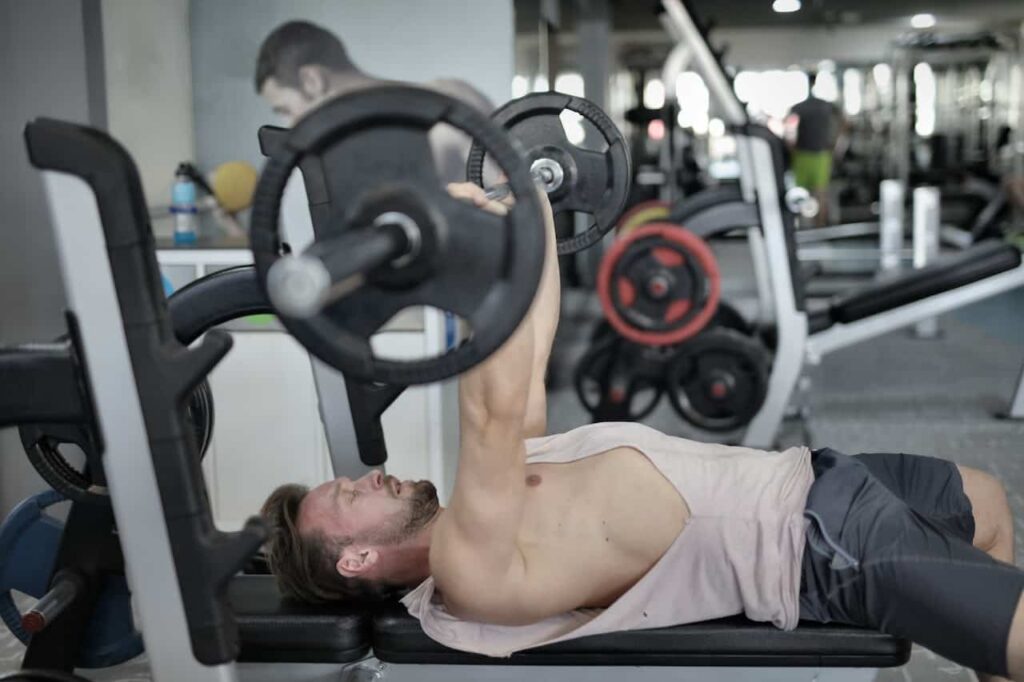In this post we look at what are the most crucial components of a muay thai strength training routine and how to put together your own routine.
The most important thing to remember is that your strength and conditioning should support and improve your muay thai.
Your muay thai strength training routine should not hamper or hinder you progress in muay thai in any way.
So what is the best way to organise your training to include an effective strength and conditioning program for muay thai?
We get into exactly that below.
The Most Important Aspects of a Muay Thai Strength Training Routine
First and foremost, the strength training routine you use must support your muay thai training and not hinder it.
If you are serious about muay thai and competing or perhaps have ambition to become a champion, then training two times per day 6 days per week is standard.
So your strength training routine needs to be factored into this extremely busy (2 per day, Mon-Sat) muay thai schedule.
If you are training muay thai less i.e 5 sessions per week then you will have a lot more time to fit in your muay thai strength training routine.
It all depends on your training schedule and goals in muay thai.

Apart from not hindering your muay thai training which should be your priority there are important components that must be a part of any muay thai strength training routine.
We will get more into the specifics of a muay thai strength routine but before that let’s address the question of, “Is muay thai training alone enough for strength and conditioning?”.
Is muay thai training alone enough for strength and conditioning?
I’ll quote one of the most respected S&C trainers for muay thai online and in the world today – Don Heatrick, and quote:
It’s a big mistake is to believe you can continue to develop the required cardiovascular fitness, strength and speed etc. by simply practising Muay Thai.
Practising Thai boxing technique alone will leave your power production potential woefully underdeveloped.
https://heatrick.com/2019/07/28/strength-and-conditioning-for-muay-thai-101
So basically, muay thai training is excellent for skill development while also offerring quite a lot of benefits for conditioning, balance, agility and some strength and muscle gain.
But muay thai training’s primary focus is to improve muay thai technical skill – first and foremost.
And while in Thailand the pros train almost exclusively muay thai twice a day six days per week – their strength sessions are usually before or after muay thai training and consist mostly of pushups, pullups and free weights but not in a periodic fashion.
In short the S&C done in Thailand is usually not done in a progressive manner that seeks to improve week upon week but more random in fashion i.e banging out hundreds of pushups, sit ups.
So dedicated strength training is extremely beneficial for muay thai and if often not adequately addressed in most gyms in Thailand.
How Dedicated Strength Training Benefits Muay Thai
So why put in dedicated strength training outside of muay thai training?
Below are the reasons why you should be putting in dedicated strength training routines for muay thai – outside of your regular muay thai training sessions.
Increased Striking Power
Strength training enhances the force generation capability of your muscles, allowing you to deliver more powerful strikes.
Stronger punches, kicks, knees, and elbows can have a greater impact on your opponent, potentially leading to knockouts or significant damage.
Improved Clinch and Grappling
Strength training improves your ability to control and manipulate your opponent in the clinch or grappling situations. Stronger muscles provide better resistance against opponents’ attempts to overpower you, allowing you to maintain advantageous positions, execute takedowns, or defend against attacks.
Injury Prevention
A well-rounded strength training program helps strengthen the muscles, tendons, and ligaments, which increases joint stability and resilience.
This can reduce the risk of common injuries in martial arts, such as strains, sprains, and ligament tears.
Endurance and Stamina
Strength training improves muscular endurance, allowing you to sustain your performance over extended periods.
This is especially important in martial arts, where matches or training sessions can be physically demanding and last several rounds.

Core Stability and Balance
Martial arts heavily rely on core strength and stability for generating power, maintaining balance, and executing techniques with precision.
Strength training exercises that target the core muscles improve your ability to generate power from your hips and transfer it efficiently through your body.
Enhancing Speed and Agility
Strength training can enhance your speed and agility by improving the rate at which your muscles contract and generate force.
This translates to faster and more explosive movements in techniques such as punches, kicks, and evasive maneuvers.
Mental Toughness
Engaging in strength training challenges you both physically and mentally.
Overcoming the difficulties of progressively heavier weights and pushing your limits in training builds mental resilience and discipline, which can carry over to your martial arts practice.
Most Important Components of a Muay Thai Strength Training Routine
Below are the most important components that should be included in any strength training routine for martial arts and muay thai.
Compound Exercises
Incorporate compound exercises that target multiple muscle groups simultaneously.
Squats, deadlifts, bench presses, and overhead presses are great examples.
These exercises build overall strength and enhance core stability.

Grip Strength
Muay Thai relies heavily on grip strength for clinching, grappling, and clinch work.
Incorporate exercises like farmer’s walks, wrist curls, and towel pull-ups to enhance your grip strength.
Plyometrics
Include explosive movements to improve power and speed.
Plyometric exercises like box jumps, medicine ball throws, and clap push-ups train your muscles to generate force rapidly, mimicking the explosive movements used in Muay Thai strikes and kicks.

Core Strength
Develop a strong core to generate power, maintain balance, and protect your spine.
Include exercises such as planks, Russian twists, and hanging leg raises to strengthen your abdominal, oblique, and lower back muscles.
Balance and Stability
Muay Thai involves dynamic movements and rapid changes in direction.
Incorporate exercises like single-leg squats, stability ball exercises, and balance board drills to improve your balance and stability, which will enhance your agility and footwork.
Unilateral exercises i.e exercises that work one side of the body at a time are also very useful and effective for martial arts and muay thai strength training.
Flexibility and Mobility
Maintain and improve flexibility through stretching and mobility exercises.
Include dynamic stretches, foam rolling, and yoga to increase your range of motion, prevent injuries, and improve recovery.
Should I do strength training before or after Muay Thai?
The timing of your strength training in relation to your Muay Thai practice can have an impact on your performance and recovery.
Here are two common approaches:
Strength Training Before Muay Thai
Some athletes prefer to prioritize their strength training by doing it before their Muay Thai practice.
This approach allows you to perform strength exercises with fresh energy and focus.
By training when you’re not fatigued from martial arts training, you can potentially lift heavier weights and focus on technique.
However, it’s important to manage your time and energy well to ensure you’re not too fatigued for your Muay Thai session.
Strength Training After Muay Thai
Others prefer to prioritize their martial arts training by doing it first and then following up with strength training afterward.
This approach ensures that you have ample energy and focus for your technique and skill development during Muay Thai practice.
Strength training after Muay Thai can be beneficial for conditioning and endurance, as it mimics the demands of fighting when you’re already fatigued.
However, be mindful of your fatigue levels to avoid compromising your form and risking injury during strength training.



